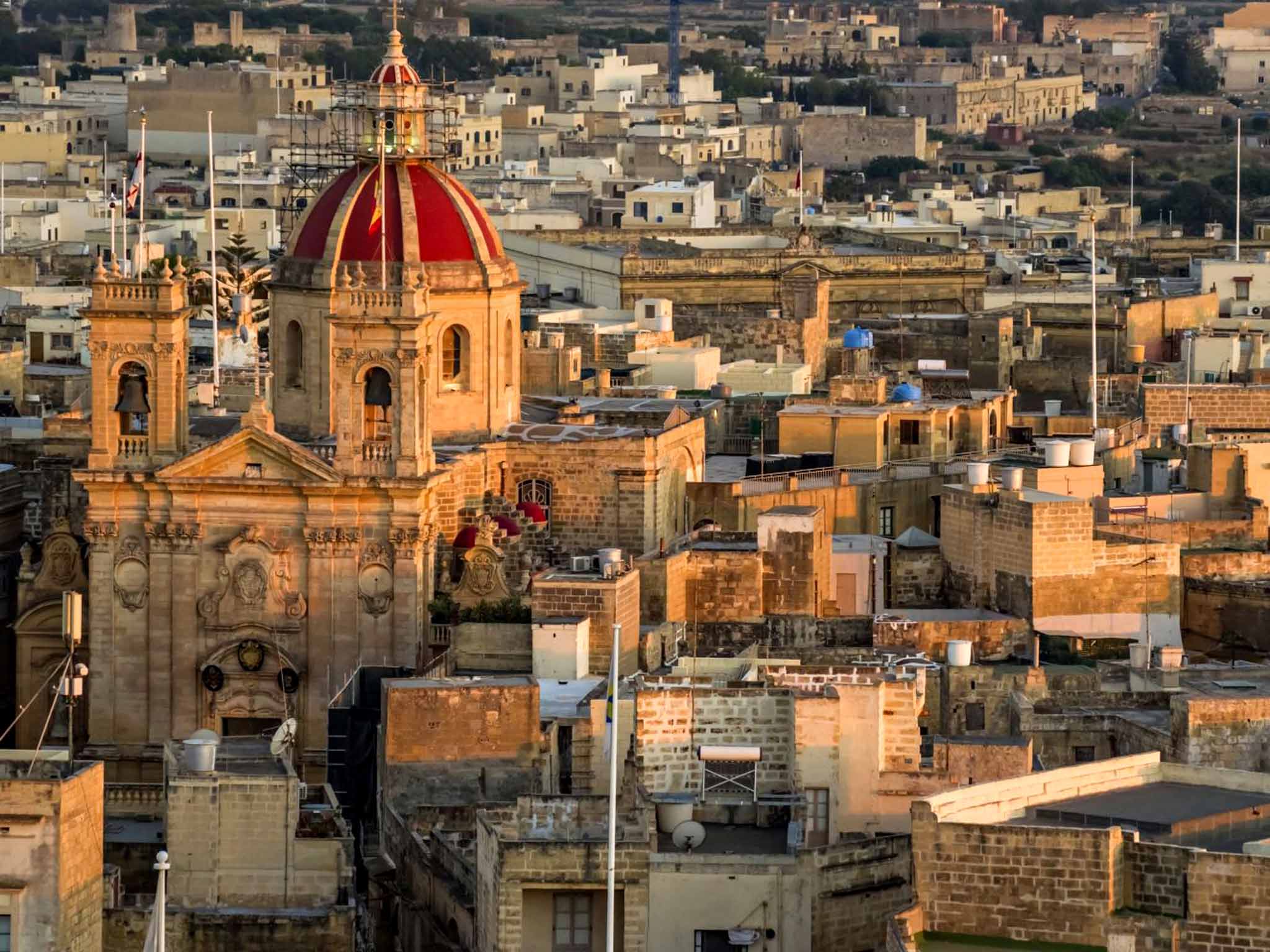Gozo: A bridge too far?
Linking Malta with its sleepy sister could spoil the outpost's charm, writes Nick Redmayne

In the year 1551, Gozo's entire population was sold into slavery by invading Ottomans. Some say visitors have been viewed with suspicion ever since. Compared with mainland Malta, Gozo is on the quiet side, an afterthought for day-tripping foreigners ticking off another sight. Only 10 per cent of tourists spend a night here. There is no airport.
"It's like Malta 20 years ago," people say. But that suggests that Gozo is a slice of Malta preserved in aspic, which is certainly not the case. Plans to build a bridge between Malta and Gozo have been discussed since the 1960s. Last summer The Times of Malta reported that "a mega Chinese state-owned company will finance a €4m study to assess the feasibility of a bridge between Malta and Gozo". The report is due to emerge in September.
Last month the paper suggested a tunnel as the most cost-effective fixed link. However, to date the 20-minute ferry ride has kept away much of the ill-conceived tourism infrastructure that Malta still struggles with. Late on a sunny June afternoon, I paid my €4.65 (£3.70) to visit another side of Malta.
Despite Gozo's reputation for quiet, I found sleep in the island's second town of Xaghra was at a

premium. My farmhouse B&B lived up to its name: buzzing mosquitoes, clucking chickens, chirping sparrows, barking dogs, neighing horses, and chiming church bells were all part of a crescendo that began at 5am. By 9.30am I was up and navigating Xaghra's sparsely populated streets. My taxi turned right at the Basilica of Our Lady of the Nativity and climbed steeply beyond a still somnambulant police station. It seemed Gozitans themselves were not especially early risers.
Decorations swung across the empty streets, arrayed in celebration of a forthcoming saint's day (or hangovers from past festivities). Elsewhere, from public buildings, flags of rival parishes rippled in a languid breeze. Gozo is less than nine miles long and five miles wide, yet within a population of fewer than 32,000 people, local parish loyalties are keenly advertised. In Gozo, churches are the constant point of reference. "Know the churches and you'll know the island," I'd been told. Discovering the island's 57 churches in a long weekend seemed a big ask.
Across an arid landscape, walls of cut limestone define the route to the island's capital, Victoria. Officially renamed in 1887 to honour the Queen's Golden Jubilee but known locally by its Arab epithet of Rabat, the town could easily pass for an Italian provincial centre. Narrow streets and café-lined piazzas shelter beneath a fortified citadel. In the past Malta's islands were seen by some as the furthest extent of Italian soil, Sicily being only 90km distant. Today the official language is English but TV aerials still reach out to catch Italian soaps from Palermo.
Within Victoria's substantial bastions I meet restaurateur Rikardu Zammit, unhurried and thoughtful behind a thick moustache and relaxed smile. Upstairs, high ceilings, cool stone, and simple wooden tables were arrayed with rustic Gozitan dishes prepared using ingredients from Rikardu's family farm. "I don't advertise," he says. "I started on my own more than 30 years ago just doing a couple of things, this platter – olives, tomatoes, onion, cheese and capers. It was easier then, no employees, no VAT, and I made more money." I asked how business was faring now: "It's more or less the same, just the cake is divided more. Even if people buy only a little, I'm happy."
According to Rikardu, "they're talking again of building a bridge. I don't agree with it. Maybe we'll get more people but the island will change. Already the young ones, they all want to go to Malta for work and excitement, and often they don't come back. The population of Gozo is ageing."
Off Victoria's Palazzo St George, behind the warm yellow stone of a crisply carved façade, a mass was in progress at St George's Basilica. Grey-haired communicants, mostly women, queued to receive the sacrament in the packed church. Seats were reserved using a variety of markers, from rosary beads to newspapers and spectacles. Candles flickered as the priest intoned the order of service. The language was Maltese, but the message of impending judgement was unmistakable.
In search of solace of the secular kind, I discovered an alley of narrow, open-fronted shops beyond a bakery and a greengrocer. I was in luck. Gangu's Bar had two customers sitting outside, both old men, one bouncing a baby on his knee.
At the bar, the crest of St George was flanked by giant mussel shells and Moretti beer ads. The barman, possibly Gangu himself, cracked open a cold and fragrant bottle of Maltese Cisk beer and handed it over with a glass resembling a toothmug. "Enjoy it. Take your time," he suggested.
For Gozo change is inevitable, and for an economy sustained by an elderly population, probably necessary. A European Commission survey at the end of 2013 showed that 54 per cent of Gozitans favoured a fixed link to the mainland. If it happens, that bridge or tunnel will herald consequences, good, bad, and unintended. In the meantime, Gozo remains adrift, just 20-minutes' journey by boat, but in ways less tangible, a long voyage across the sea.
Getting there
Nick Redmayne travelled with Air Malta (00 356 21 662 211; airmalta.com) which flies to Malta from Heathrow, Manchester and Gatwick. Ferries link Malta and Gozo (00 356 215 56114; gozochannel.com).
Staying there
Nick stayed at Inzolia farmhouse (00 356 21 563 231; abrahamgozofarmhouses.com) in Xaghra. A week's self-catering accommodation for up to 10 guests costs from €945.
Eating there
Ta' Rikardu, 4 Fosos Street, Victoria (00 356 21 555 953). Lunch costs from €11 per person.
More information
Join our commenting forum
Join thought-provoking conversations, follow other Independent readers and see their replies
0Comments